Story and photos by Chris Sloan; was originally published on AirwaysNews.com on September 14, 2015.
With top level delegations from Airbus and the State of Alabama, Airbus Group today threw open the doors to its first U.S. Final Assembly Line in Mobile, Alabama at the Brookley Aeroplex ’“ The first time a foreign manufacturer has built jets on U.S. soil.
This new production facility, specifically constructed to build Airbus A320 family aircraft destined for delivery to United States and Canadian customers, joins sister factories in Toulouse, Hamburg, and the northeastern Chinese city of Tianjin, where the company recently announced A330s would be constructed beginning in 2018.
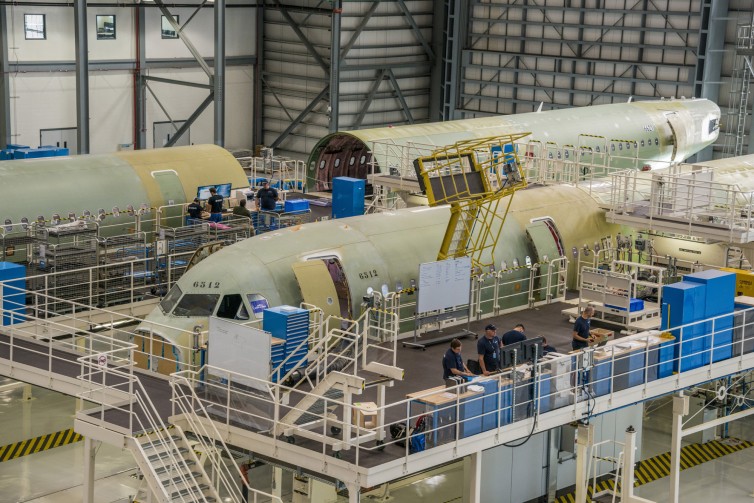
Major components of the first two aircraft to be assembled at the Airbus U.S. Manufacturing Facility are shown in the main final assembly hangar – Photo: Airbus
The Mobile final assembly line opens with ambitious goals, befitting the A320 family program. First aircraft assembly began in July with the first U.S.-produced airframe, a JetBlue A321ceo (MSN6512), which is expected to roll out in the first quarter of 2016, with delivery set in the second quarter. The second aircraft, also an A321ceo for American Airlines, is set to be delivered by the third quarter of the next year.
Plans call for an initial production rate of four A320 family ceos per month by the end of 2017, following an initial start of two aircraft per month. With the A321 being ’œthe heart of the U.S. market’, the initial deliveries on the horizon are for the stretched variant. A320neo family deliveries are scheduled to begin in late 2017 / early 2018 with no drop in production rate.
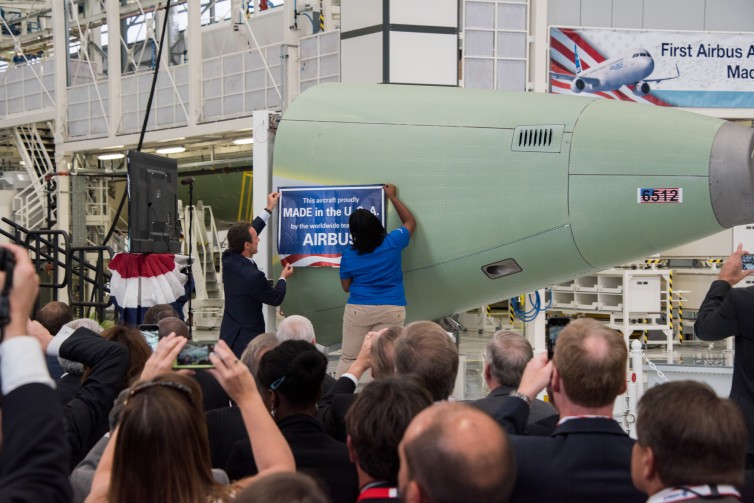
Airbus President and CEO Fabrice Brgier helped with the placement of a ceremonial placard on a component of the first aircraft to be produced in Mobile, Alabama ’“ which reads: ’œThis aircraft proudly made in the U.S.A. by the worldwide team from Airbus’ – Photo: Airbus
Eventually, the plant has the capability to increase its production rate to eight aircraft per month by adding additional shifts (up from the 1 shift at the onset) and Cap-X expenditures. Airbus anticipates the single-line facility will produce 40 to 50 aircraft each year by 2018. This coincides with the company’s plan to raise the current monthly production rates of the A320 family from 42 to 50 by the first quarter of 2017 to fulfill a backlog of 5,439 single-aisle orders out of a total of 12,139 deliveries. The production rate could escalate to as high as 60 A320 family aircraft per month by the end of the current decade.
These lofty production goals rely on the Mobile plant as a crucial player for the A320 family aircraft program. The property has a total footprint of 116 acres (47 Hectares). Of these, 53 acres (21 Hectares) have been developed with buildings and tarmacs.
AIRBUS IN ALABAMA NEARLY GOES SOUTH
The plant, first announced in July 2012, broke ground in April 2013 with construction on the complex happening at a breakneck pace and at the cost of $600 million. This isn’t Airbus first relationship in Alabama’“two other Airbus facilities preceded the new factory. Adjacent to the new Brookley complex is the Airbus Engineering Center where more than 200 engineers are responsible for various interior elements of aircraft, including design and engineering of the cabin, crew rest, lavatories, and galleys. This center, which first opened in 2007, was particularly instrumental in the A350 program.
The Airbus Military Service Center at Mobile Regional Airport is a long-running operation supports the U.S. military’s C212 transport aircraft. The site offers MRO services, component repair, extensive material services, engineering, and technical support for US operators of the C212 and larger CN235 tactical transports.
The location of the new A320 factory in Mobile is not without precedence, nor has it been an easy journey. The site was originally selected to assemble the Airbus A330 MRTT, a replacement for the U.S. Air Force’s KC-135E Stratotankers, and A330 freighters as well. The contract was originally awarded to the joint venture between EADS and Northrop Grumman as the KC-30. The KC-30 originally won the contract against the Boeing KC-767 in 2008. Boeing protested, and by February 2011 the $35 billion contract was awarded to Boeing.
Shortly after the disappointing turn in events, an unbowed contingent led by Alabama Governor Robert Bentley secretly met with Tom Enders, then the CEO of AirbusGroup, at the Paris Air Show in 2011. With a flagging economy back home, but a strong aerospace workforce, an attractive deep water port, and a history of attracting European company manufacturing such as Mercedes-Benz to the state, the governor was determined to bring Airbus investment and jobs to Alabama. In the face of significant competition from other states, the negotiations dragged on for a year. At the end of the day, the Republican Alabama governor was able to deliver incentives totaling $158 million.
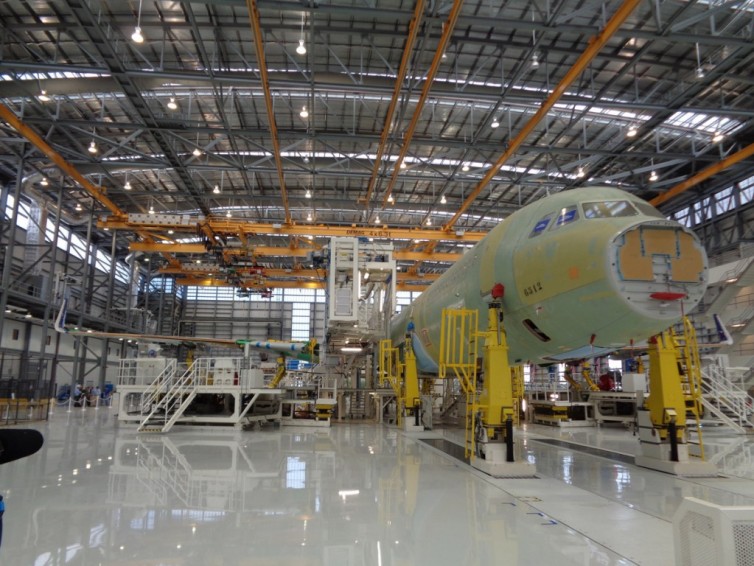
The first A321, going to jetBlue, in the final assembly line station – Photo: Chris Sloan | AirwaysNews
The agreement allows the state to withhold cash if Airbus doesn’t meet the investment and jobs targets. Local incentives to the tune of $33.6 million were also part of the package. City and county entities and the Mobile Airport Authority also made contributions, including lease payments, money for new construction, site preparation, land lease assistance, and roadway improvements.
According to the Alabama Department of Commerce, the $158 million incentive includes: $82 million in funds for capital investments in the plant and other expenses, $51.9 million for a 40,000-square-foot on-site training center, plus state corporate income tax credit tax breaks on manufacturing equipment.
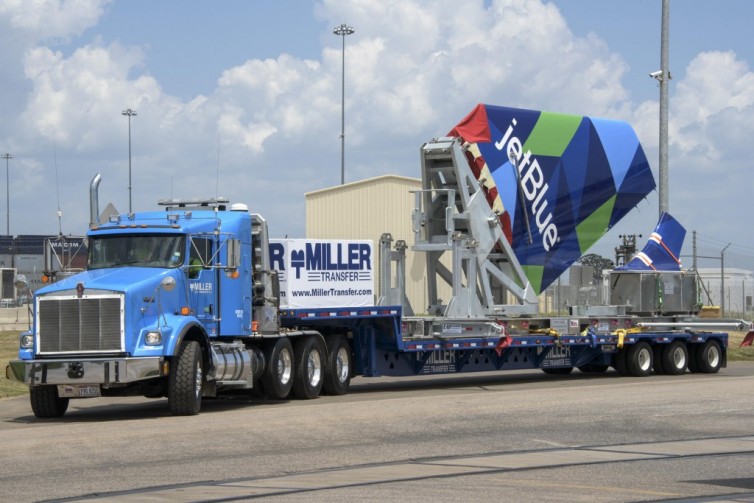
The initial large aircraft components arrived at the Airbus U.S. Manufacturing Facility in the summer of 2015, keeping the new Mobile, Alabama-based site on schedule to deliver its first aircraft ’“ an A321ceo (current engine option) ’“ to JetBlue in 2016 – Photo: Airbus
BUILDING THE ’˜BAMA BUS
Despite the expenses and potential delays that transportation logistics method may cause, Airbus points on the low manufacturing costs and the non-unionized workforce, as well as manufacturing in the ’œDollar-Zone’ in Alabama to outweigh such expenses. Additional U.S. built aircraft components actually incur lower logistics cost by delivering straight to the Airbus In Alabama plant. Airbus has established additional FAL’s outside the Hamburg-Toulouse Axis to considerable success . The Final Assembly Line located in Tianjin, China, produces three-four aircraft per month on a similar line there. Best practices from Airbus plants are being adopted to Mobile. Boeing, on the other hand, has achieved economies of scale by centralizing all 737 production at a single factory in Renton, Washington.
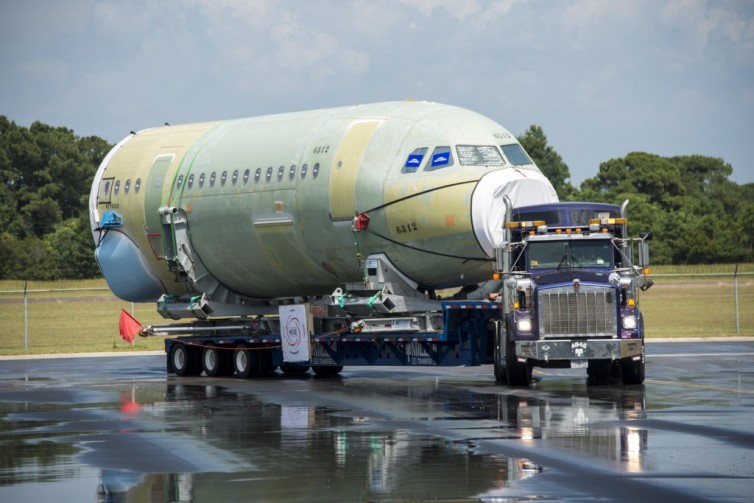
The first major component assemblies (MCAs) for aircraft to be assembled at the Airbus U.S. Manufacturing Facility in Mobile, Alabama arrived this summer from Hamburg, Germany – Photo: Airbus
THE TRANSHIPMENT BUILDING
Although the major components transported to the United States are shipped from Hamburg, these come from different countries in Europe. The front fuselage is built in France while the aft fuselage section and vertical tail plane are built in Germany. Wings are constructed in the United Kingdom and the horizontal tail plane is made in Spain. From this Building, the Major Component Assemblies (MCAs) are sent to the massive new FAL, which is divided into five work stations.
Once up to full speed, the A320 final assembly will take 25 days at an initial production rate of two aircraft per month building to four aircraft within a year. The first station, known as Station 41, is where the forward and aft sections of the fuselage are joined, and is where internal elements such as monuments the galleys are also installed. The pictures show the second A321ceo in production, to be delivered to American Airlines.
Station 40 is the second work station at the FAL and is where the wings and the fuselage are joined. The first wing / fuselage join is scheduled just 2 weeks from now. Landing gear is also installed at this station. In the pictures we can see the progress in the assembly of MSN6512 for jetBlue. This station utilizes new automatic drilling units for riveting 2,400 rivets, an Airbus first.
The third work station, named as Station 35, is where airplane powers on its own. Vertical and horizontal tail planes are assembled here and the wings are completed. Auxiliary Power Units (APU’s) are also installed in this station and the installation of the cabin furnishing begins. The nose-cone and radome are added here as well. Power up of the aircraft is first initialized here. The final station is called the Dock. Final cabin install occurs here. The landing gear functions are checked. Lighting, IFE, and cabin pressurization systems are installed and tested here. The nearly complete aircraft leaves the FAL hangar from here.
A separate building accommodating up to 2 aircraft at the same time is referred to as the Final Phase / Flight Line. Engines are hung here along with final testing before the aircraft returns outside and is sent to the paint shop.
MAAS Aviation will be in charge of painting all Airbus aircraft in Mobile. The paint hangar has an area of 27,700 sq feet (2,574m2) and will be capable of painting all A320 family aircraft’“A318, A319, A320 and A321 equipped with Sharklets and NEO options.
Airbus has also opened a delivery center ’“ its fourth – with U.S. based flight crews for Airbus and customer test flights. Deliveries from Airbus In Alabama, as with final assembly will be limited to North American customers ’“ primarily to those in America. With the enormous order backlog, many A320 family airframes will still be assembled in Toulouse and Hamburg, even if the production rate ends up ramping up.
ONE OF THE MOST SIGNIFICANT U.S. AEROSPACE MILESTONE IN DECADES
At a press conference held after the tour, Fabrice Brgier, Airbus President and CEO opened the event when he commented ’œTomorrow (September 14) will mark one of the most significant events in American aerospace in decades. Overnight, the number of manufacturers of jetliners in the U.S. will be doubled.’
Brgier explains ’œWhat counted was to be present in the United States. There are other less expensive places to build, but we feel at home here.’ Allan McCartor, Chairman and CEO of Airbus Group, Inc., boasted ’œthere are efficiencies being in the US such as being in the dollar zone and to be in key industrial areas of Europe, US, and China is part of our global strategy.’
McCartor is clear that the organization considers itself essentially a U.S. company. As proof, they cite the economic impact of the Airbus presence in the United States: 3,800 employees, presence in 16 different states and supporting 245,000 jobs in the United States with spending of $16.5 billion. In Alabama alone, ’œThis has contributed over 1,000 direct jobs. Annual economic impact to state is over $409 million in additional GDP.’
THE SINGLE-AISLE MARKET SEGMENT: A BURGEONING DEMAND
The single-aisle mainline jetliner segment is certainly burgeoning. Airbus forecasts a worldwide demand for more than 20,000 single-aisle aircraft over the next 20 years. According to Airbus Americas President Barry Eccleston, the perspectives are bullish. ’œWe have over 12,000 firm orders and have delivered 6,700 A320 family aircraft,’ he said.
Boeing, for its part assembles the 737 at 42 per month at a single factory in Renton, but plans to raise 737 production to 47 per month by 2017 and 52 per month by the following year in 2018. The company says it could easily ramp up to 60 ’“ all this while the 737 Max prototype has begun production with deliveries first scheduled in 2017. As of the end of August, the competing 737 had 4,269 aircraft on back-order and deliveries of 8,674 airframes.
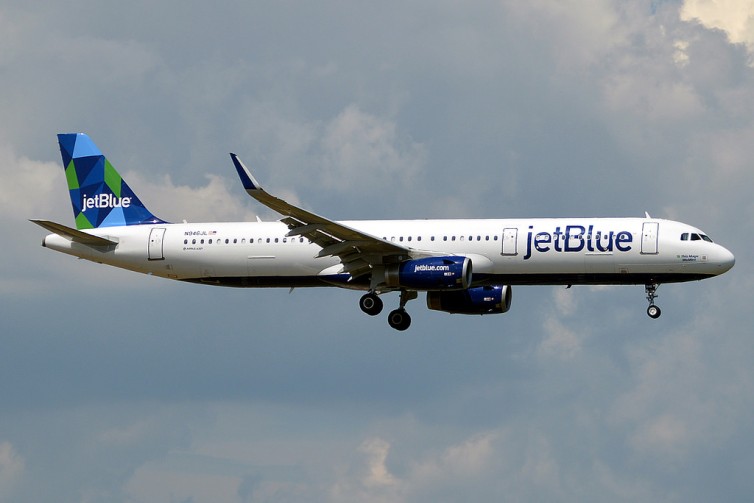
jetBlue Airbus A321 – Photo: Anna Zvereva | FlickrCC
According to Airbus, the A320 has the 54% of the market share versus the Boeing 737 family aircraft. The forthcoming new engine option (neo) variant has helped to drive this market share. ’œThe neo has secured 4,193 orders from 74 customers,’ Eccleston stated.
“Airbus already reports 1,340 airplanes in operation with North American operators. The United States continues to be the world’s largest market with a demand for 4,730 single aircraft in North America over the next 20 years. The market forecast extends to 1,000 twin aisle aircraft and 150 VLAs,’ Eccleston forecasted.
In success, Airbus Mobile could be a candidate for additional work. Allan McCartor says in a ’œtie-breaking situation’, the ’œMade In America’ promise could make the difference in winning an order. Further, Airbus doesn’t rule out one day assembling and delivering aircraft here to non North American customers ’“ which would allow it to tap Ex-Im Bank financing. With these eye popping forecasts and optimism, Airbus Mobile has planted a historic flag on U.S. soil that has the potential to become even more significant.
Comments are closed here.
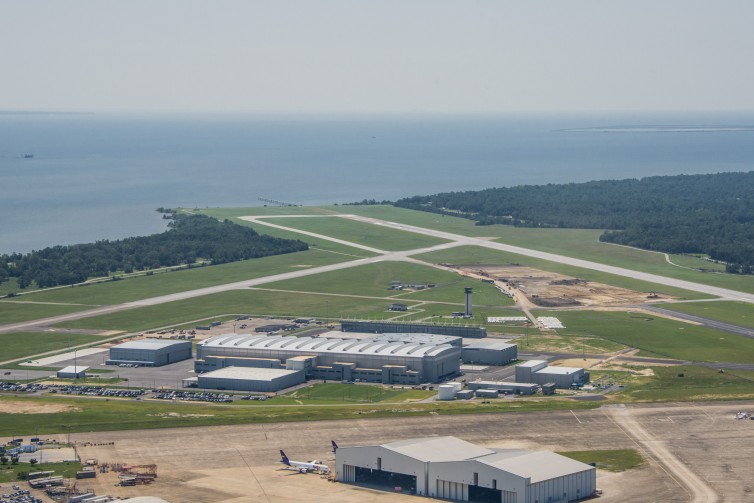
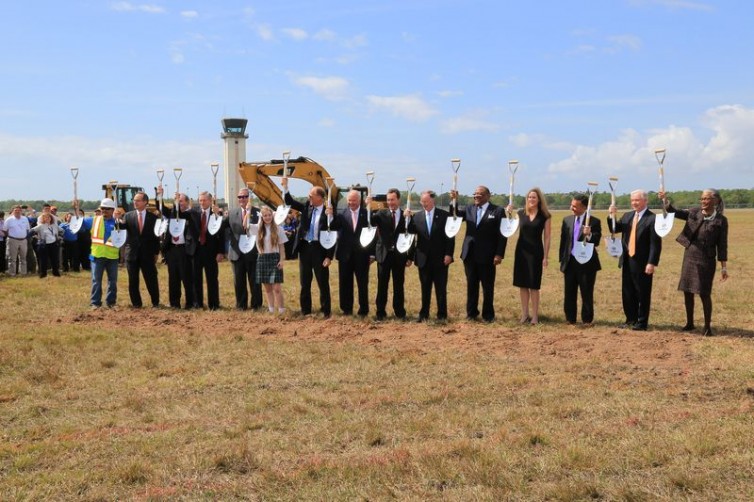
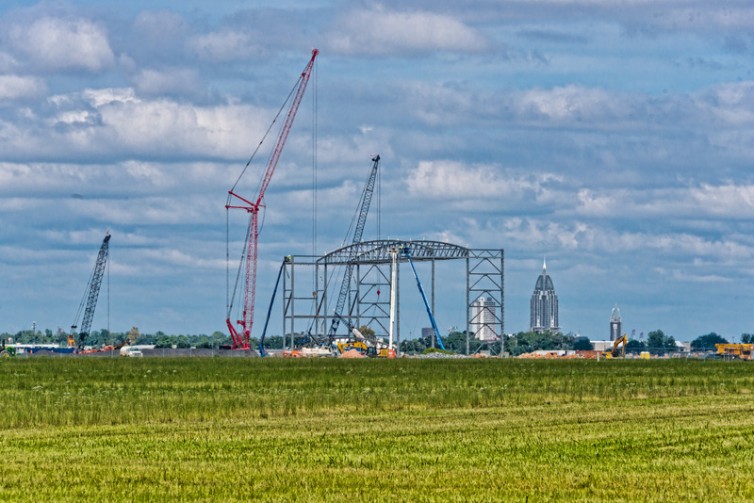

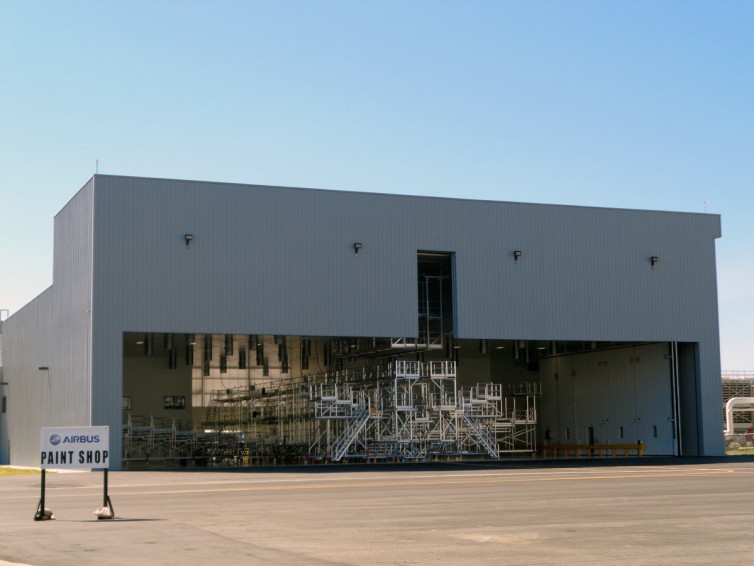
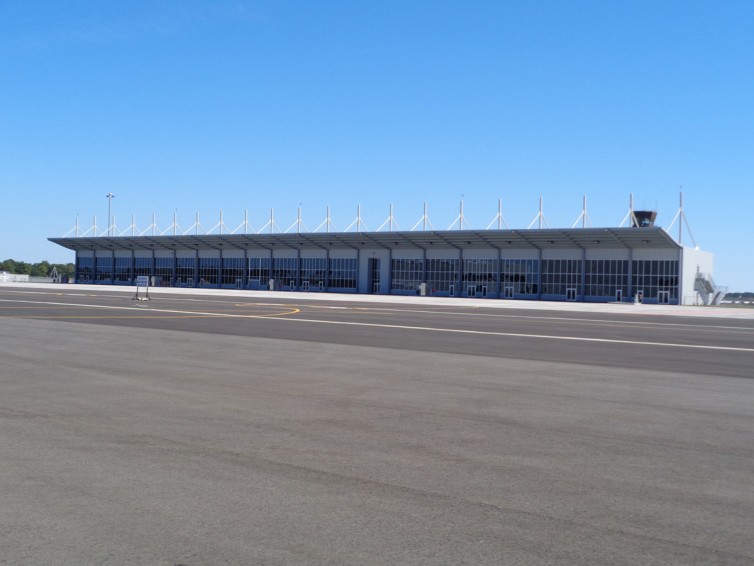
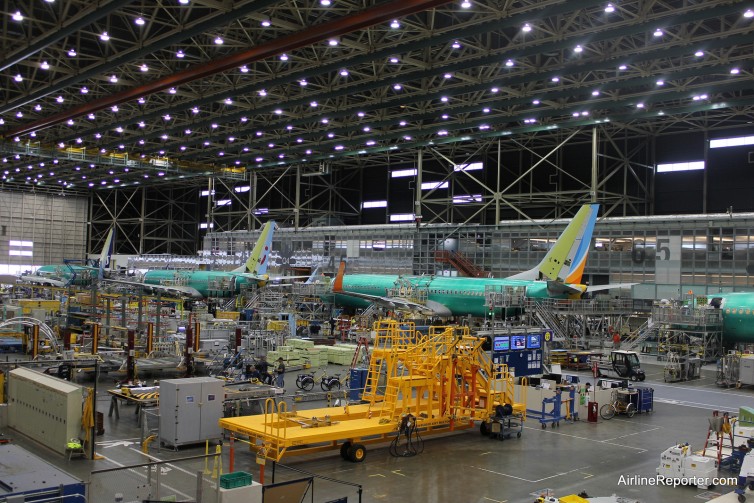
Interesting story. My thoughts after watching how it travelled by sea is the long term corrosion issue. That pesky salt air gets into everything. Even my car which came over from Japan had salt contamination in it from the journey. So down the road will we see these airframes suffer from premature corrosion issues. Oh well , that is perhaps a small risk as they really cannot assemble any meaningful amount of aircraft in this feel good move by Airbus.